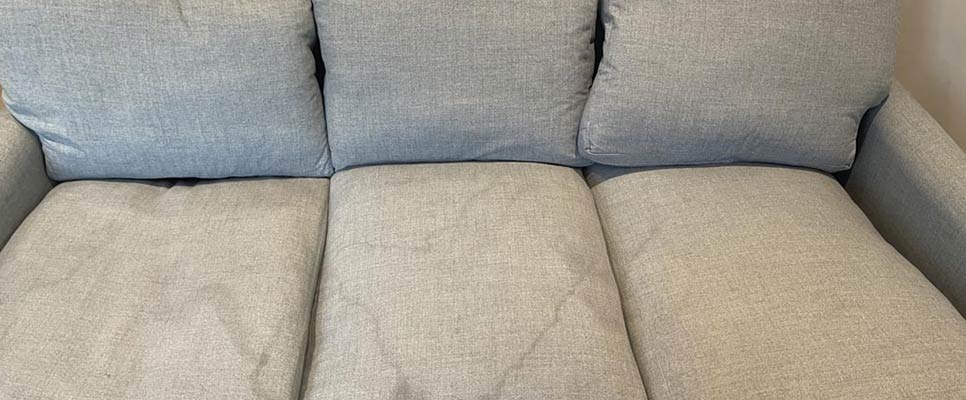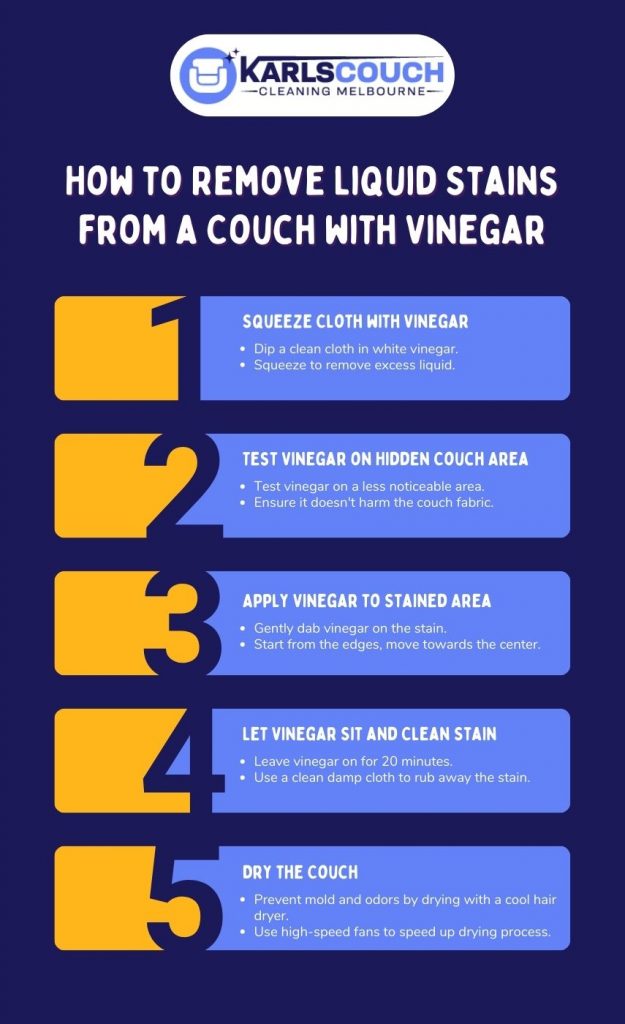It might sound unbelievable, but even impurity-free water can leave behind light brown stains on your fabric sofa. This discolouration is caused by the mineral content in water, and not by the water itself. Iron and manganese are frequently found in tap water and can cause discolouration of a fabric couch. These minerals, when left untreated, will create stains on your couch or sofa.
In case of drink or liquid stains, it is also of utmost importance to clean your couch; or work on couch stain removal as soon as a spill happens. Water or other liquid liquids, such as tea or coffee, may be spilled on your couch; especially couches, making them stubborn stains that are difficult to remove. As a result, you must remove them as soon as possible. But why is it so essential to get beverage stains off the couch as soon as possible?

Because the couches would experience substantial damage if left in this state without being cleaned. To avoid uncomfortable circumstances with liquid stains, same day couch cleaning is required. Certain chemicals might leave long-lasting stains and require cleaning. These are their names:
- Red wine
- Alcohol
- Vomit
- Urine
Have no fear of couch water stains, you can remove them like a pro by using some tricks and couch cleaning steps given in this article: “How To Remove Liquid Stains From The Couch”. We will walk you through the process of removing them and restoring your sofa to its original beauty.
Know Your Sofa Fabrics First
Fabric couches are popular due to the variety of materials, designs, and colours available. Fabrics often used to build couches include:
- Linen
- Cotton
- Wool
- Polyester and microfiber
- Acrylic
- Nylon
- Chenille
Silk sofas are also available. After any form of mishap, including water, this fabric needs expert couch cleaning. If you have a silk couch, you should contact a couch cleaning specialist. For cleaning fabric couches, you can use the following steps.
Know How To Remove Liquid Stains From The Couch
White vinegar is made of acetic acid, a colourless compound that has a distinct sour flavour and odour. It is a naturally occurring organic acid. Familiar vinegar generally consists of 5% acetic acid which is created through the fermentation of grapes and apples. Its low pH level makes it a great choice for getting rid of minerals like iron and manganese. It can be used for removing almost all the stubborn stains from the couch. Using white vinegar, couch liquid stain removal is not complicated. Once you have blotted the moisture, just follow these easy steps:

Step 1: Squeeze Cloth With Vinegar
Dip a clean cloth in white vinegar, then squeeze it to ensure the liquid doesn’t drip. Be careful and wear hand gloves before you proceed with the procedure, How To Remove Liquid Stains From The Couch.
Step 2: Test Vinegar On A Hidden Piece Of Couch
To test if the fabric of your couch is prone to fading, you should apply some vinegar solution to a less noticeable area using a dampened cloth. If that proves successful and doesn’t harm the couch, you can move on and tackle the water or liquid stain.
Step 3: Apply Vinegar Over The Liquid-Stained Area
Use the vinegar-dampened cloth to gently dab on the water or liquid-stained area of your couch. You can start from the outer edges and slowly move towards the centre of the stained area. It’s not necessary to rub it in; simply dab it lightly over the entire area until the stain has been covered. Be careful while staining removal or couch cleaning at home.
Step 4: Leave The Vinegar To Work On The Liquid Stain
Let the vinegar stay on the couch for approximately 20 minutes. Subsequently, take a clean cloth and put it under lukewarm water before squeezing out the excess liquid. Use this cloth to rub away at the water stain from outside to inside. Repeat this until all traces of the stain have been eliminated. You can use a stiff brush or an old brush to eliminate the liquid stain. Just be careful and don’t do harsh scrubbing, it may lead to damage to the couch fabric.
Step 5: Dry the couch
To prevent the formation of mould and any lingering vinegar smell, thoroughly dry the affected area with a cool hair dryer setting. This will help remove any stains from the surface. You can use high-speed fans and ventilate the room to fast couch drying.
Conclusion
Doing the couch liquid stain removal task could be easy but you have to be careful while working on the couch. Some couch fabrics may be affected by vinegar and need some professional care. In such cases, you may need Professional Couch Cleaning. Experts have years of knowledge to clean the couch and the couch’s stains.
Published on: November 22, 2023
Last updated on: January 31, 2025
